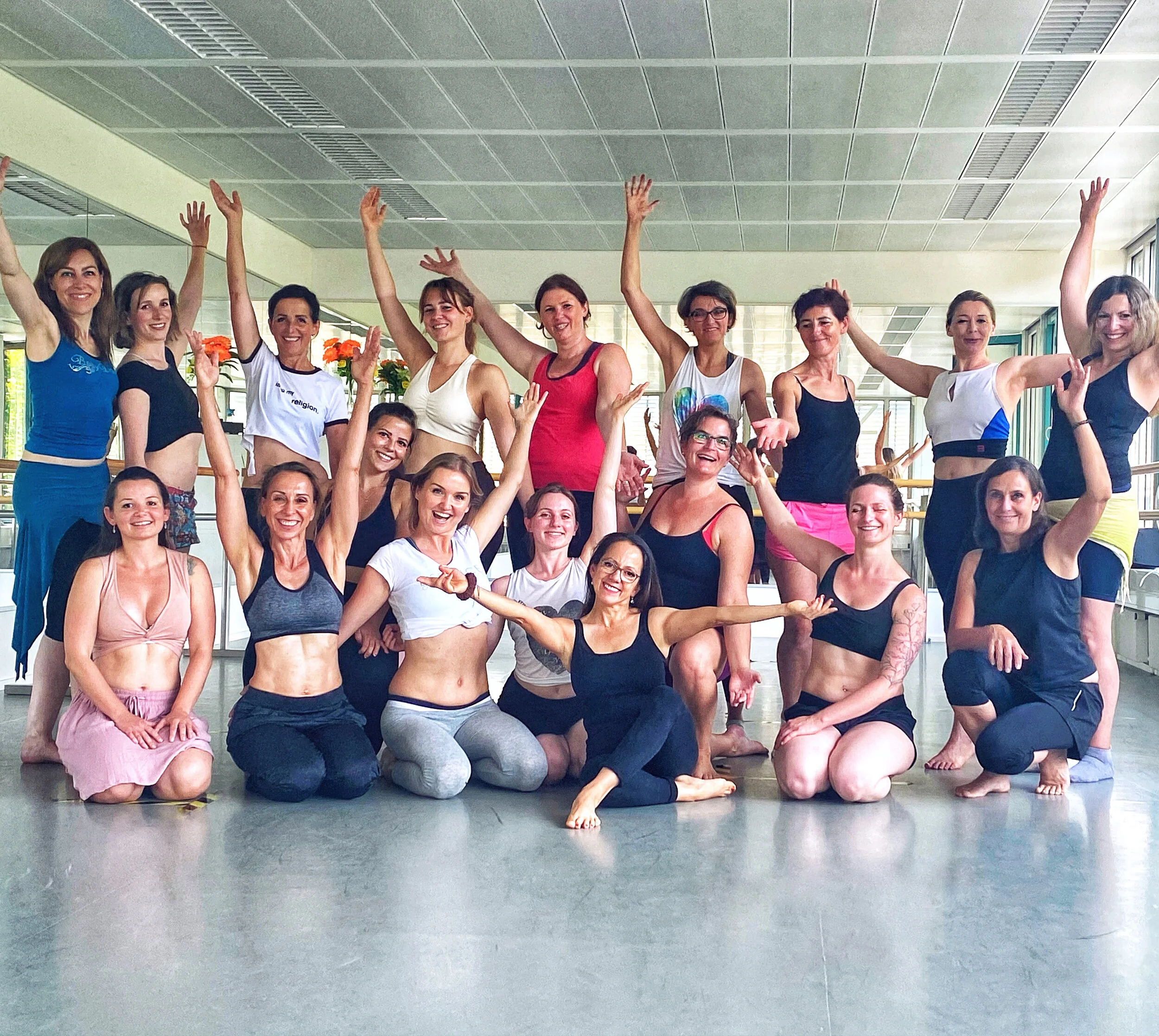In a survey of 4,000 women aged 25 to 84, the scientist Jean Lawrence discovered that one in three women has at least one pelvic floor dysfunction. He disproved the myth that pelvic floor problems only affect older women. In today’s world most women’s pelvic floors have atrophied and on top of that often carry excess tension. According to the Neurological Urodynamics and Urology Institute, 29% of all women undergo more than one operation in their lifetimes to solve pelvic floor problems.
Why are our pelvic floors too loose and too tense at the same time?
Let’s take a look at some obvious and not-so-obvious reasons and see what we can do about them.
CONSEQUENCES OF OUR LIFESTYLE
On one hand, the circumstances of our lives have changed radically in the last 12,000 years since we humans settled, and we no longer lead the kinds of lives that our bodies were optimized for by evolution. On the other, we have disconnected our bodies from our minds and grown estranged from our instincts and implicit knowledge.
As nomadic hunter-gatherers we led active lives. We moved our bodies in ways that trained and utilized them appropriately. Depending on where we lived, we covered great distances. We climbed, dived, hunted, and squatted on the earth to relax or work. We spent our whole lives with our tribes out in nature. Every member of the tribe needed to be capable of doing almost any task, and this variety kept bodies and minds integrated, fit, and flexible.
Once we started domesticating animals and cultivating plants, we became tied to specific places, and we developed greater specialization. Occupations emerged, and people carried out the same activities over and over again until most of us today, post-industrialization, spend almost all of our time sitting or standing.
Is sitting bad for pelvic floor health?
Compared to our ancestors, we hardly move at all. Thanks to modern forms of transport, we drive instead of walking. With the spread of media, from newspapers, books, and radio to television, the internet, and smartphones, we are not only getting further and further away from the present, but we are also spending the majority of our leisure time sitting still. We squeeze our movement into a 60-minute slot at the gym where we push ourselves to our physical limitations.
Today, we sit 13 hours per day on average. The way we sit on chairs and other furniture seems normal to us, but it is disastrous for our pussy, our pelvic floor, and our abdominal organs. Sitting on chairs as we do, only became common within the last two hundred years. Even seated toilets didn’t appear in most households until the mid-nineteenth century. The advent of the seated toilet made things even worse for our pelvic floor and abdominal organs. In other words, we no longer lead a natural life.
This isn’t bad in itself because life today is wonderful. I wouldn’t want to swap with my ancestors, giving up opportunities to shape my own life or giving up the Internet and easy worldwide travel.
We are not helpless though and we don’t have to live in ways that hurt our bodies.
With the insights and exercises I share with you here on my blog and in my products and teaching, you can relearn the skills and abilities that have disappeared from our civilization. Thanks to our achievements, you can also easily get the latest research and the best tools and tips for a fulfilling life and love life, all of which our stone age sisters could not access.
LOST ABILITY TO COPE WITH STRESS
Another important factor affecting our pelvic floor is that, in contrast to animals and our ancestors, we have become alienated from our body and its inherent instincts. Without this connection, we can no longer handle stress naturally or release danger after it has passed. We are therefore the only animal (except for those we imprison or keep as pets) to have developed ongoing symptoms of stress and trauma. Stress plays a major role in weakening the pelvic floor.
There is an unfortunate vicious cycle at play here because people with weakened pelvic floors tend to be psychologically weaker and prone to stress. That’s why my method is so effective as it reduces stress while you build your conscious connection to your pelvic floor and your innate body wisdom.
LOST CONNECTION TO OUR PELVIS
Religious prudishness also contributes to the loss of our natural access to the pelvic floor. It places taboos and shame on sex, a natural, beautiful and intimate activity, as well as the body parts associated with it. This attitude paralyzes us even today. Although having a lot of good sex is supposedly part of a successful life, today we have less sex than ever before.
Moshé Feldenkrais taught that culturally stigmatized areas of the body vanish from our self-image. This is exactly where my method starts. Through all the exercises, you will cultivate a new neurological self-image, which moves the pelvic floor back into your awareness. At the same time, you will have the opportunity to free yourself from old, unconscious thought patterns and to experience your sexuality according to your own standards.
CONCLUSION
The pelvic floor crisis in our society has many reasons: the wrong exercises, too much sitting, and too little movement in general, stress, the objectification of our bodies, and the anti-pleasure attitude in our society.
You have all the tools at your fingertips to tune into your body, activate your pelvic floor, and step into your personal power.
WHERE DO WE BEGIN?
Learn an intuitive and sensual method that makes your pelvic floor strong, agile, and able to relax with my Sensuous Dance Program. You’ll not only learn my best pelvic floor exercises, but also how to re-connect to your body and your inner wisdom and experience more pleasure and orgasms.
To discover the fascinating science behind this unique method, get my book Pussy Yoga (out in 5 languages).
But the very best thing you can do is to immerse yourself and learn my method from the ground up in our yearly trainings:
PUSSY YOGA™ IMMERSION for an empowering deep dive into your pelvic floor and emotions.
ESSENCE OF BELLYDANCE™ for an effortless and fun way to train your pelvic floor through dance.
I hope to see you inside!
Coco
















How did you, as a young woman who had never been pregnant, start thinking about your pelvic floor?